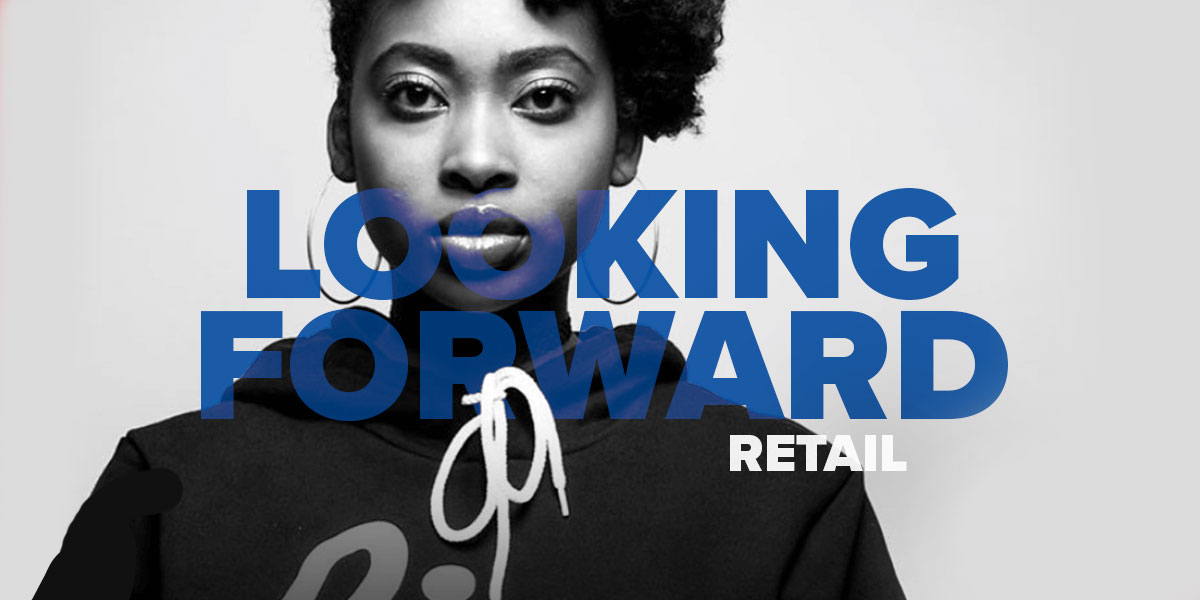-
Business Banking -
Looking Forward
How Has Covid-19 Affected Restaurants
For restaurant owners, 2020 has been a year of quick and constant change. While many reopened restaurants across the country have been forced to close again due to the coronavirus pandemic, the CEO of OpenTable is predicting that one in four restaurants will not reopen once the pandemic ends.
Nevertheless, there are a handful of restaurateurs who have been able to plan for the new industry ahead in new and innovative ways.
Mendocino Farms, Dave's Hot Chicken, Jon & Vinny's and the restaurants helmed by chef and entrepreneur Wolfgang Puck are just a few who are figuring out how to redefine the shifting food culture in Southern California, where indoor dining is prohibited for the time being.
At Puck's restaurant Chinois on Main in Santa Monica, contactless takeout and delivery is the new norm. At Spago in Beverly Hills, diners placed to-go orders for a popular new dish featured in April - crispy fried chicken. Puck himself hosted a Zoom dinner party and cooking demo in May: For $175 per person, participants took part in an interactive cook-along with Chef Wolfgang, eating together like old friends in this new normal.
Adapting quickly to changing conditions has been lifesaving for some restaurants, but that doesn't mean it has been easy. "It is a very difficult time to operate during the pandemic. No matter if a restaurant is small or large, ultimately we have to adjust the cost and labor for the business," said Puck. “It's obvious that everyone is affected by the virus. But we try to help every farmer, fisherman, purveyor as much as we can... because we want everyone to stay in business."
Pivoting is not a foreign skill set to the restaurant industry, but the coronavirus pandemic, which has disproportionately affected restaurants of all sizes, is forcing changes that are challenging for even the most seasoned restaurateurs, including widespread dining room closures and debilitating guidelines for safety and social distancing.
"The pandemic is huge for restaurants in multiple ways. It's challenging the normal operations model for all restaurants, whether they are fast food drive-through or white tablecloth sit-down," says Marques Bayne, franchise finance banker at City National Bank. "The restaurant industry isn't like retail, where people can just put on a mask and keep going as normal. There are all kinds of new protocols for social distancing, food safety, dining room closures and others, and both profitability and top line revenues are changing."
As chefs and restaurant owners across the country work to support the restaurant and food culture in the cities they call home, four industry leaders are speaking up about how they are using this time to redefine food—and their communities—for the better.
And though a widespread reopening for dining rooms may be further down the road, new promotions and takeout menus have arrived right on time.
Setting the Table, or Removing the Table: Which Is It?
For many restaurants in California and elsewhere, one of the biggest challenges of the pandemic has been the stop-and-go process of closing and reopening.
After widespread shutdowns in March, many states and municipalities began allowing restaurants to reopen during the summer, only to reverse course a few weeks later as COVID-19 cases surged anew.
“It's a balance between planning and reacting right now," said Ty Phelps, director of marketing at Dave's Hot Chicken, which operates four locations in Southern California. “We were moving toward reopening our dining rooms, and then everything completely flipped around to where we were a couple of months earlier."
In late July, Dave's Hot Chicken was still doing business via takeout windows, third-party delivery services and curbside pickup only. While operating a restaurant without a dining room is not exactly traditional, it hasn't been so bad for Dave's.
After the local stay at home order went into effect on March 13, Dave's sales declined for about two weeks, said Phelps. But the restaurant added online ordering capability, and “our sales stabilized almost immediately and now have actually gone up," he said.
Like Dave's, restaurants with shuttered dining rooms are looking to drive sales “by maximizing all revenue generators they can take out of the four walls of their restaurants," Bayne said.
For instance, the appeal of many great restaurants is the in-person dining experience. To survive when indoor dining isn't possible or appealing to many customers, restaurants are having to find new ways to generate revenue outside the restaurant itself, such as Puck's Zoom dinner party.
For many restaurants, creating revenue outside the dining room includes offering to-go meals, family meals, pre-packaged or frozen meals and meal kits, Bayne continued. But to provide those services effectively, restaurateurs are finding they must change the ways they operate.
Developing New Models for New Times
Things must be done differently if restaurants are to continue accepting orders, fulfilling them and getting food out to customers on time. As a result, many restaurants are not only building new service lines but also devising new operations.
To succeed, restaurants must find the "sweet spot" between leaner operations to preserve cash flow and continuing to provide value and "craveability," Bayne said. That may mean narrowing the menu to focus on signature favorites or items that travel well for takeout, therefore minimizing waste. It may also mean thinning staffing levels to a new, leaner workforce that provides good service while keeping costs low, and offering new product lines to meet the needs of customers.
For example, Mendocino Farms, which operates 33 neighborhood restaurants across California and Texas, has responded to the realities of the pandemic by developing new marketing promotions to make it easier for guests “to access delicious food during a difficult time," according to CEO Kevin Miles.
To meet people where they are, Mendocino Farms created new product categories and packages that appeal to those who are sheltering in place.
Mendocino Farms started off by offering “Marketplace Goods," such as discounted bottles of wine, loaves of freshly baked bread and bottles of select house-made dressings, to help customers complete takeout meals and avoid trips to the supermarket.
While the Marketplace Goods sold, Miles said they quickly realized the opportunity for bundled packages over individual items.
One of Mendocino Farms' most successful marketing promotions during the pandemic has been The Mendo Meal Deal, which offered any four sandwiches or entrée salads and two deli sides for $40. “We initially thought it would appeal the most to families, but it turns out that a lot of couples and individuals were using it as a cost-effective way to stock-up on lunches and dinners for a few days to avoid cooking," Miles said.
“This deal was compelling for our guests because it gave them the flexibility to build a package to their preference, and it felt like an incredible value," he continued, "as we rarely discount our food."
Coming Together in Spirit, if Not in Person
Along with focusing on how they can provide relevant services and the same great food for their patrons, many restaurant owners also are working with large companies to meet the needs of their local communities.
Jon & Vinny's, a beloved Italian restaurant with two locations in Los Angeles – one in Fairfax and one in Brentwood – has partnered with Amazon Studios, American Express, Lexus and World Central Kitchen to cook and deliver meals to people in need, including first responders, hospitals, schools and homeless individuals. Their experience provides a prime example of how restaurants can not only impact their local neighborhoods but also find alternative revenue sources that allow them to stay afloat during an extended shutdown.
“My fingers are crossed that we're able to continue to receive this support from partnering organizations because restaurants and catering won't return to normal anytime soon," said Jon Shook, co-owner of Jon & Vinny's, Animal and Son of A Gun in Los Angeles, and a partner in numerous other restaurants. “And though these funds may run out, we hope this type of community outreach can remain" part of restaurant culture.
In addition to meeting the needs of the local community, restaurant owners are also working to meet the needs of their suppliers. Shook said his restaurants' relationships with local farmers has strengthened during the pandemic “because we are all working together to survive."
He suggested other restaurant owners double-check pricing with their suppliers to ensure that each is providing the best pricing and utilizing best practices.
When business slowed early in the pandemic at Dave's Hot Chicken, some suppliers decreased the frequency of their deliveries. Although business has picked back up, Phelps said the restaurant has adapted to less-frequent deliveries and learned to plan ahead better for supply needs.
New Rules? No Problem
After the pandemic started, Mendocino Farms worked quickly to launch its new Mendo app, which offers mobile ordering of both their regular and catering menus, delivery and unique functionality for curbside pickup. “This new technology allows guests to pick up their orders without notifying the store of their arrival," Miles said. “Once the guest drives into the store's set radius, our store team is alerted and can immediately meet the guest with their order. It's seamless, completely contactless and easy."
As restaurants find their footing in a new environment defined by curbside pickup and takeout, many chefs and restaurant owners say the changes they're undertaking now will become a permanent part of their restaurant culture.
For instance, Puck's fine dining restaurants, including Spago Beverly Hills, Chinois on Main and Wolfgang Puck at Hotel Bel-Air, have all adapted to the widespread demand for takeout options and outdoor dining. As diners become more comfortable with ordering out, Puck is able to decipher what works and what doesn't and to use their preferences as seeds of inspiration.
And Puck isn't the only one reconsidering the overall dining experience. As more restaurants move toward the takeout option as a crucial part of their business models, menus and restaurant offerings are being reshaped and reconsidered.
Jon & Vinny's has expanded its menu to include new goods, such as local and organic produce, beer, house-made sauces, desserts and other favorites for customers to take home and use in their own kitchens. The trendy New American restaurant Animal, which Jon also co-owns and has closed temporarily during the pandemic, is functioning as the Jon & Vinny's Goods store.
“People have really enjoyed this service, and we are exploring the option of keeping it running post-pandemic," said Shook. “Not all food works for takeout, so our menus will necessarily adapt." Many restaurants normally survive on their top five menu items, according to Shook, and he predicts that they will simply take less popular or experimental items off the menus moving forward to reduce waste and labor.
But Still, Expect to Wine and Dine Again
When dining rooms can reopen, attention to detailed safety protocols will inevitably affect the experience of restaurant dining.
For instance, Dave's Hot Chicken expects to eliminate self-service and have a staff person manning the drink station at all times. Rather than allowing guests to fill and refill their own drinks as usual, the staffer will serve drinks and refills, helping the restaurant maintain sanitation regulations.
Shook expects to see more restaurants hiring sanitation directors to ensure they are in compliance with regulatory guidelines.
Other changes that will be required for restaurants to reopen safely will include removing some furniture to allow for distancing, and creating new plans for traffic flow throughout the dining room, Phelps noted. Restaurant dining may look different for some time, but for most restaurants, the changes that will stick long-term are the ones that allow them to do what they do best while protecting their staffers and their customers.
“The most important thing right now is finding the best way to open safely, keeping employees safe and guests safe," Phelps said. “We want to make changes that align with those priorities but that do not change our identity."
For many restaurants, the dining experience is as important as the food. But, in times like these, restaurants and those who love to dine out are staring at a blank canvas. They have the opportunity to redefine now what might constitute a "great" restaurant experience in the future.
And the restaurants that are surviving—and even thriving—are taking each new day, and definition, in stride.
This article is for general information and education only. It is provided as a courtesy to the clients and friends of City National Bank (City National). City National does not warrant that it is accurate or complete. Opinions expressed and estimates or projections given are those of the authors or persons quoted as of the date of the article with no obligation to update or notify of inaccuracy or change. This article may not be reproduced, distributed or further published by any person without the written consent of City National. Please cite source when quoting.
City National, as a matter of policy, does not give tax, accounting, regulatory or legal advice. Rules in the areas of law, tax, and accounting are subject to change and open to varying interpretations and readers should seek professional advice.







